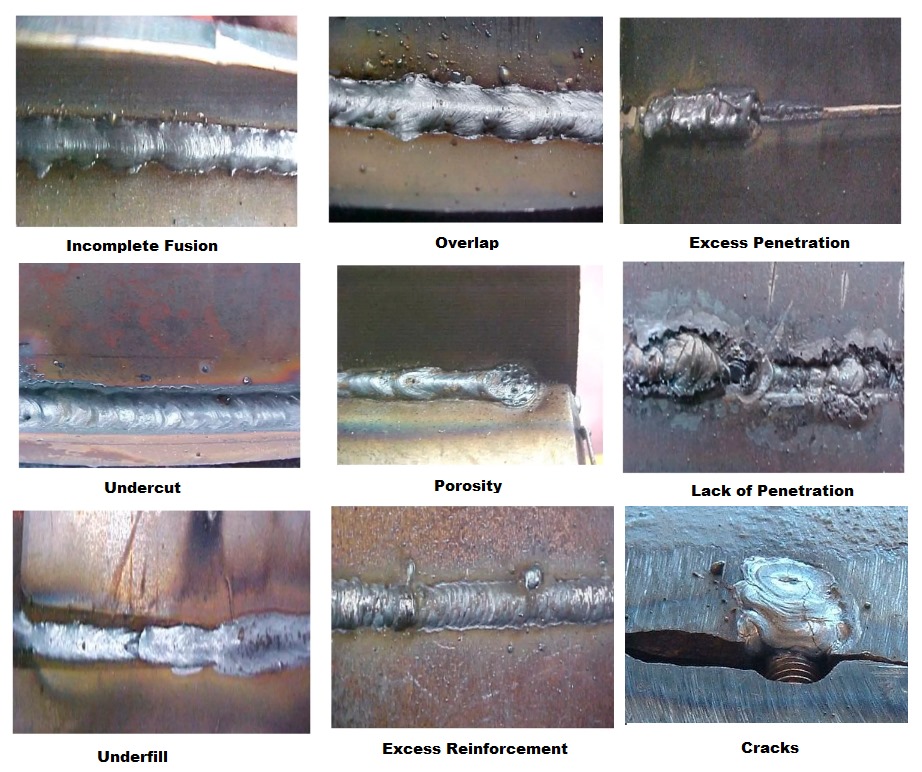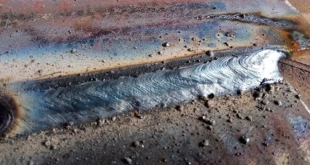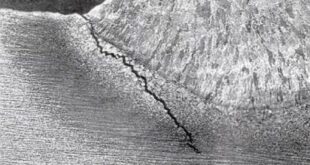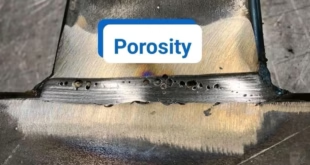External Welding Defects: Ensuring Welding Excellence
Welding is a fundamental process in various industries, contributing to the creation of robust structures and machinery. However, the presence of external welding defects can compromise the integrity of welded joints, leading to safety concerns and structural vulnerabilities. In this article, we explore the common external welding defects, their causes, and the imperative need for prevention and quality control measures.
Common External Welding Defects
Porosity
Porosity, characterized by the presence of small cavities or voids in the weld metal, is a prevalent external welding defect. This can weaken the joint and make it susceptible to corrosion.
Undercutting
Undercutting occurs when the edges of the base metal adjacent to the weld are eroded, forming a groove. This defect reduces the cross-sectional thickness of the weld and compromises its strength.
Spatter
Spatter refers to the metal particles expelled during welding that can adhere to the weld surface. It not only affects the aesthetic appeal but can also lead to structural issues if not addressed promptly.
Lack of Fusion
Lack of fusion happens when there is inadequate bonding between the weld metal and the base metal. This can result in a weak joint and compromises the overall strength of the welded structure.
Causes of External Welding Defects
Poor Welding Technique
Improper welding techniques, such as incorrect arc length or travel speed, can contribute to the occurrence of external defects. Training and skill enhancement are crucial in addressing this issue.
Inadequate Cleaning
Adequate preparation of the welding surface is vital to prevent defects. Inadequate cleaning can introduce contaminants, leading to issues like porosity and lack of fusion.
Incorrect Electrode or Filler Material
Using the wrong electrode or filler material for a specific welding application can result in defects. Matching the material properties is essential for a strong and durable weld.
Impact on Welded Structures
The presence of external welding defects can have severe consequences on welded structures.
Weakening of Joints
Defects like lack of fusion and undercutting can significantly weaken the joints, making them more susceptible to mechanical stress.
Reduced Structural Integrity
Structural integrity is compromised when defects like porosity are present, as these voids can create weak points in the weld.
Increased Vulnerability to Corrosion
Spatter and other surface defects can increase the vulnerability of the weld to corrosion, leading to premature failure of the structure.
Prevention of External Welding Defects
Proper Training for Welders
Investing in comprehensive training programs for welders ensures that they are equipped with the skills and knowledge to execute welding processes effectively.
Adequate Preparation of the Welding Surface
Thorough cleaning and preparation of the welding surface minimize the risk of defects caused by contaminants.
Use of Suitable Welding Materials
Selecting the right electrode and filler material based on the materials being joined is crucial for defect-free welding.
Quality Control Measures
Non-destructive Testing
Non-destructive testing methods, such as X-ray and ultrasound, play a pivotal role in identifying internal and external defects without compromising the integrity of the weld.
Visual Inspection
Regular visual inspections during and after the welding process help detect surface defects like spatter and undercutting.
X-ray and Ultrasound Testing
Advanced testing methods like X-ray and ultrasound are employed to inspect the internal structure of welds and identify defects that may not be visible to the naked eye.
Importance of Addressing External Welding Defects
The importance of addressing external welding defects extends beyond immediate safety concerns.
Safety Concerns
Defective welds can pose serious safety risks, especially in industries where structural integrity is crucial for preventing accidents.
Long-term Structural Performance
Proactive defect prevention measures contribute to the long-term performance of welded structures, ensuring they meet or exceed their intended lifespan.
Cost Implications of Rework
Addressing defects during the initial welding process is more cost-effective than dealing with rework and repairs after the structure is in service.
Best Practices in Welding Quality Assurance
Continuous Monitoring During the Welding Process
Real-time monitoring during welding allows for immediate intervention if defects are detected, minimizing the likelihood of defects reaching the final weld.
Regular Training and Skill Enhancement for Welders
Continuous education and skill enhancement programs keep welders updated on the latest techniques and technologies, reducing the risk of human error.
Technological Advances in Welding Inspection
Introduction of Automated Inspection Systems
Automated inspection systems leverage technology to detect defects quickly and accurately, enhancing the efficiency of quality control processes.
Use of Artificial Intelligence for Defect Detection
Artificial intelligence is increasingly being utilized to analyze large datasets from welding processes, providing insights into potential defects and areas for improvement.
Challenges in Identifying External Welding Defects
Small-scale Defects
Detecting small-scale defects can be challenging, emphasizing the need for advanced inspection techniques.
Inconsistencies in Inspection Standards
Harmonizing inspection standards across industries is a challenge, as different sectors may have varying requirements and expectations.
Industry Standards for Welding Quality
Adhering to established industry standards and certifications is crucial for maintaining welding quality.
Overview of Relevant Standards and Certifications
Highlighting the key standards and certifications ensures that welders and inspectors are aligned with industry expectations.
The Role of Regulatory Bodies in Maintaining Quality
Regulatory bodies play a pivotal role in establishing and enforcing standards that promote welding excellence and safety.
The Future of Welding Quality Assurance
Emerging Technologies in Defect Prevention
Incorporating emerging technologies, such as sensors and monitoring systems, is the future of defect prevention in welding.
Predictive Maintenance in Welding
Predictive maintenance, enabled by data analytics and artificial intelligence, allows for proactive identification and prevention of potential defects.
FAQs
What are the most common external welding defects?
Porosity, undercutting, spatter, and lack of fusion are among the most common external welding defects.
How can welders prevent external defects during the welding process?
Proper training, thorough surface preparation, and using suitable welding materials are key in preventing external welding defects.
Why is quality control crucial in welding?
Quality control ensures the safety and long-term performance of welded structures while minimizing the cost implications of rework.
Are external welding defects more common in specific industries?
External welding defects can occur in any industry, but their prevalence may vary based on factors like welding techniques and materials.
How often should welders undergo training for defect prevention?
Regular training and skill enhancement programs should be implemented to keep welders updated on the latest techniques and technologies for defect prevention.
Conclusion
In conclusion, addressing external welding defects is paramount for ensuring the safety, longevity, and cost-effectiveness of welded structures. By implementing preventive measures, investing in quality control, and embracing technological advancements, the welding industry can uphold high standards of excellence.
 Welding of Welders All about Welding and Welders
Welding of Welders All about Welding and Welders




